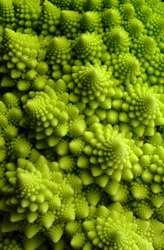Self-organized nanopatterns in multicomponent systems

European researchers have studied a new class of self-organized nanostructures formed by the complex interdependence of chemical reactions and diffusion in multicomponent reacting systems. Project results have potential applications in nanofabrication and patterning.
Diffusion is ubiquitous. It is the means by which one smells dinner cooking in the kitchen while watching the evening news in the living room – the odour molecules drift down their concentration gradient, diffusing out of the kitchen where they are in high concentration into areas of low concentration such as the living room.
Diffusion plays a critical role in the formation of mixtures of chemically reacting species (reaction-diffusion systems). It is complex when considering multicomponent systems undergoing chemical reactions in which the reactions themselves affect the diffusion of molecules and the diffusion of one component can affect the diffusion of others (cross-diffusion).
Cross-diffusion phenomena can create patterns of molecules or groups of molecules in the reacting system that appear to constitute a new class of self-organized structures.
EU-funded researchers seeking to evaluate such phenomena of multicomponent systems initiated the ‘Cross-diffusion and pattern formation in reaction diffusion systems’ (Crossdiffusionrossi) project.
Initial theoretical studies suggested that the complex patterns can be on the scale of tens to hundreds of nanometres with diffusion-controlled reactions supporting a potential role in nanotechnological innovations.
Scientists chose the Belousov-Zhabotinsky (BZ) reaction in water-in-oil dioctyl sodium sulfosuccinate (AOT) microemulsions (ME) to extend previous results for four-component systems to five-component systems. They developed a new theoretical method for calculation of cross-diffusion coefficients based on an extension of the procedure for four-component systems. The innovative new method led to first-time measurements of cross-diffusion coefficients in a five-component mixture.
Building on these results, researchers assessed the role of cross-diffusion in pattern formation of the BZ-AOT system where it was found to produce a noticeable shift in equilibria, or in the onset of Turing instability. Turing patterns abound in nature, seen in chemicals in dishes and in the spots of a leopard’s coat. They may play a role in tissue formation and even the formation of galaxies.
Continuation of the project should lead to identification of novel patterns and mechanisms for controlling pattern formation. Potential commercial applications include tissue regeneration (forming functional patterns of cells from stem cells) and nanofabrication in solar technology, biological sensors and electronics devices.
Provided by CORDIS


















